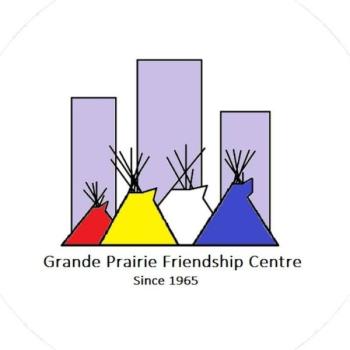Summary
Local Journalism Initiative Reporter
Windspeaker.com
After 12 years of successfully supporting at-risk Indigenous families in the Grande Prairie area who have interactions with Alberta’s child welfare system, Mamewpitaw has not received the provincial dollars to keep operating.
Worse than that, says Grande Prairie Friendship Centre (GPFC) president Leonard Auger, the money to support Indigenous families has gone to a non-Indigenous organization.
Mamewpitaw, operated by the GPFC, offered culturally focused intervention support and re-unification programs for Indigenous families at risk.
It was the first time GPFC had to respond to a request for proposals to get funding for Mamewpitawn. In previous years the province had not requested proposals from contract holders for family intervention services, says program coordinator Abby Bourque.
“There were other friendship centres in the communities that we collaborated with in the writing of this proposal. So they were writing proposals for their communities,” she said.
Proposals went forward from Peace River and High Level, with High Level servicing both that community and Paddle Prairie Métis Settlement. While the Mamewpitaw program would have been new to the others, says Bourque, the proposals saw the friendship centres, including Grande Prairie, sharing Elders, land resources and other supports.
She stressed that all the friendship centres had built strong relationships in their communities and had strong foundations.
None of the proposals from the friendship centres were approved. Instead, all of the region’s funding for family intervention services went to PACE, a non-Indigenous organization in Grande Prairie that focuses on sexual assault and trauma.
The rejection letter for GPFC from Children’s Services, North Region Family Intervention Services states only “based on the evaluation conducted on your submission, we regret to inform you that your submission was not selected for contract awarding.”
Auger said, “We had a feeling (Alberta Children’s Services) didn’t fully understand the Truth and Reconciliation (Commission’s) calls for action, and in there it does say that Indigenous organizations should be providing programs for Indigenous people. That was our biggest issue.”
The first five of 94 calls to action from the TRC on the legacy of Indian residential schools focuses on child welfare. The TRC calls upon “the federal, provincial, territorial, and Aboriginal governments to commit to reducing the number of Aboriginal children in care by … ensuring that social workers and others who conduct child-welfare investigations are properly educated and trained about the potential for Aboriginal communities and families to provide more appropriate solutions to family healing.”
Prior to putting in their proposal, GPFC completed their accreditation process with the Canadian Accreditation Council for health and human services. It was a costly and time-consuming process to get their four-year accreditation, says Bourque, which added to GPFC’s shock at not getting the funding from the province.
“Our program was unique in that everything was embedded in culture. Our participants felt like they belonged here. They felt that connection. We used wholistic approaches to healing and to giving them strategies for parenting and stuff, which is going to be that missing component with that other agency because they just aren’t equipped for that,” said Bourque. “We were shocked and surprised and quite honestly heartbroken because we just really believe in the work that we do.”
Now GPFC is scrambling to access other funding, both federal, through Jordan’s Principle, and provincial. They had applied for $700,000 through Alberta Children’s Services.
“Whatever fits into what our vision is, we’ll be providing proposals for,” said Bourque.
In a news release from GPFC board, Children’s Services was called out for implementing an adjudication process for the Family Intervention Services funding that “did not include Indigenous representation as decision-makers, nor did it address factors and programming necessary for Indigenous people in its scoring criteria.”
In an email response to Windspeaker.com, Nancy Bishay, spokesperson for Alberta Children’s Services, said “Children’s Services is changing how it delivers services to improve relationships with Indigenous and First Nation communities. Similar to Edmonton and Calgary, we will be creating teams dedicated to work with individual Indigenous and First Nation communities. This model has proven successful in building relationships and improving outcomes for children.”
Bishay also said, “Our main priority is to ensure that vulnerable children, on-and-off reserve are safe and supported. We are committed to keeping indigenous families together whenever safely possible, and when children do come into care that they maintain connected to their communities and culture.”
Auger said GPFC will continue challenging the system in relation to its awareness of the TRC calls to action and “the need for Indigenous organizations to look after our own Indigenous people.”
Local Journalism Initiative Reporters are supported by a financial contribution made by the Government of Canada.

